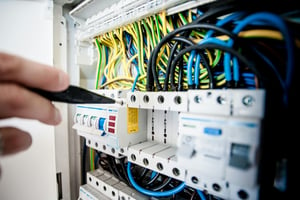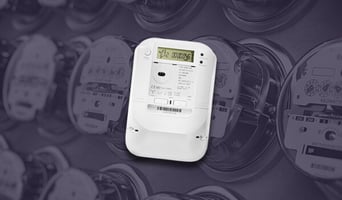Power supply de-rating is a critical concept in ensuring the safe and reliable operation of power...
Power Supply Safety: Understanding Certifications, Classes, and Best Practices
When designing systems that require reliable power, ensuring the safety of power supplies is crucial. Not only does it protect the equipment, but it also safeguards users from potential hazards like electric shock or fire. In this post, we will explore power supply safety standards, protection classes, and the critical certifications that every designer and engineer should be aware of. Let’s dive into the key points drawn from recent discussions on this topic.
IEC Protection Classes: Building Blocks of Safety
The International Electrotechnical Commission (IEC) outlines several protection classes to categorize the level of protection a power supply provides against electric shock. This classification is particularly important in industries such as healthcare, industrial applications, and consumer electronics.
- Class I: Power supplies in this category rely on basic insulation and require a protective earth connection. The grounding ensures that, in the event of insulation failure, the conductive parts are not hazardous.
- Class II: These power supplies offer enhanced protection with double or reinforced insulation. As a result, they do not require grounding. This makes Class II devices popular in applications where connecting to an earth ground may be inconvenient or impossible, such as portable devices or consumer electronics.
- Class III: These devices operate at extra-low voltage, typically under 50V AC or 120V DC, which inherently reduces the risk of electric shock. Class III power supplies are commonly used in products like low-voltage lighting systems, making them safe for everyday use.
Understanding these protection classes helps manufacturers choose the correct power supplies to meet the safety needs of their specific applications.
Medical-Grade Power Supplies: Meeting Higher Standards
In medical environments, power supply safety takes on even greater significance due to the direct impact on patient care and life-supporting equipment. IEC 60601-1 standards govern the design and performance of medical power supplies, ensuring that they meet stringent requirements for safety, reliability, and performance. Here are some key considerations for medical-grade power supplies:
- Creepage and Clearance Distances: Medical power supplies must maintain minimum distances between conductive parts to prevent electrical arcing, particularly in environments where the equipment is exposed to high humidity or fluids.
- Low Leakage Current: In medical settings, leakage currents must be minimized to avoid endangering patients. Even small currents can interfere with sensitive medical devices or pose a risk to patients with compromised health.
- Insulation: Medical power supplies typically use multiple layers of insulation to ensure safety, especially in devices that make direct contact with patients.
When selecting power supplies for medical devices, these factors ensure the safety and reliability of equipment such as diagnostic machines and life-support systems.
Safety Reports and Certifications: What to Look For
When integrating power supplies into a system, reviewing the safety reports and certifications is a must. Certifications like the CB report (IEC 60950-1) provide vital details on a power supply's compliance with international safety standards. These reports often include key information such as:
- Input and Output Ratings: These specify the acceptable voltage and current levels, ensuring the power supply will operate safely under expected conditions.
- Conditions of Acceptability: This section highlights any specific guidelines for how a product should be used, such as recommended enclosures or field wiring restrictions.
- Pollution Degree Ratings: Power supplies are often rated for different environmental conditions. For example, a product rated for a pollution degree of 2 is suitable for indoor office or lab environments, while higher pollution degrees indicate suitability for harsher environments.
Failure to consider these certification details can lead to costly delays during system certification and, more importantly, pose serious safety risks in the final product.
Best Practices for Power Supply Safety
While adhering to standards and certifications is crucial, implementing additional best practices during the design and integration of power supplies further enhances safety:
- Proper Grounding: Always ensure that Class I power supplies are properly grounded. Inadequate grounding can lead to electrical faults, increasing the risk of shock or fire.
- Environmental Protection: For systems operating in extreme environments (e.g., high humidity, dust, or outdoor settings), ensure the power supplies are appropriately rated and housed in protective enclosures. This prevents damage and reduces the risk of hazardous failures.
- Thermal Management: Overheating is a common cause of power supply failure. Implementing adequate cooling solutions, such as heat sinks or fans, helps maintain optimal operating temperatures and prolongs the lifespan of the power supply.
- Regular Maintenance: Power supplies, particularly in industrial or medical settings, should undergo regular inspections to ensure they are functioning correctly. Over time, insulation may degrade, connections may loosen, and environmental factors may impact performance.
Conclusion
Power supply safety is a multi-faceted challenge that requires careful consideration of IEC protection classes, medical-grade standards, and safety certifications. At MicroPower Direct, we understand the importance of designing power supplies that meet these stringent safety requirements. By selecting the right power supply and following industry best practices, you can ensure that your systems not only perform optimally but also keep users and equipment safe from harm.
When it comes to power supply safety, understanding the details of certifications and protection standards is key. Always consult the relevant safety reports and ensure that your power supply choices are well-matched to the operational environment. This way, you can avoid unnecessary risks and ensure the long-term success of your product.



